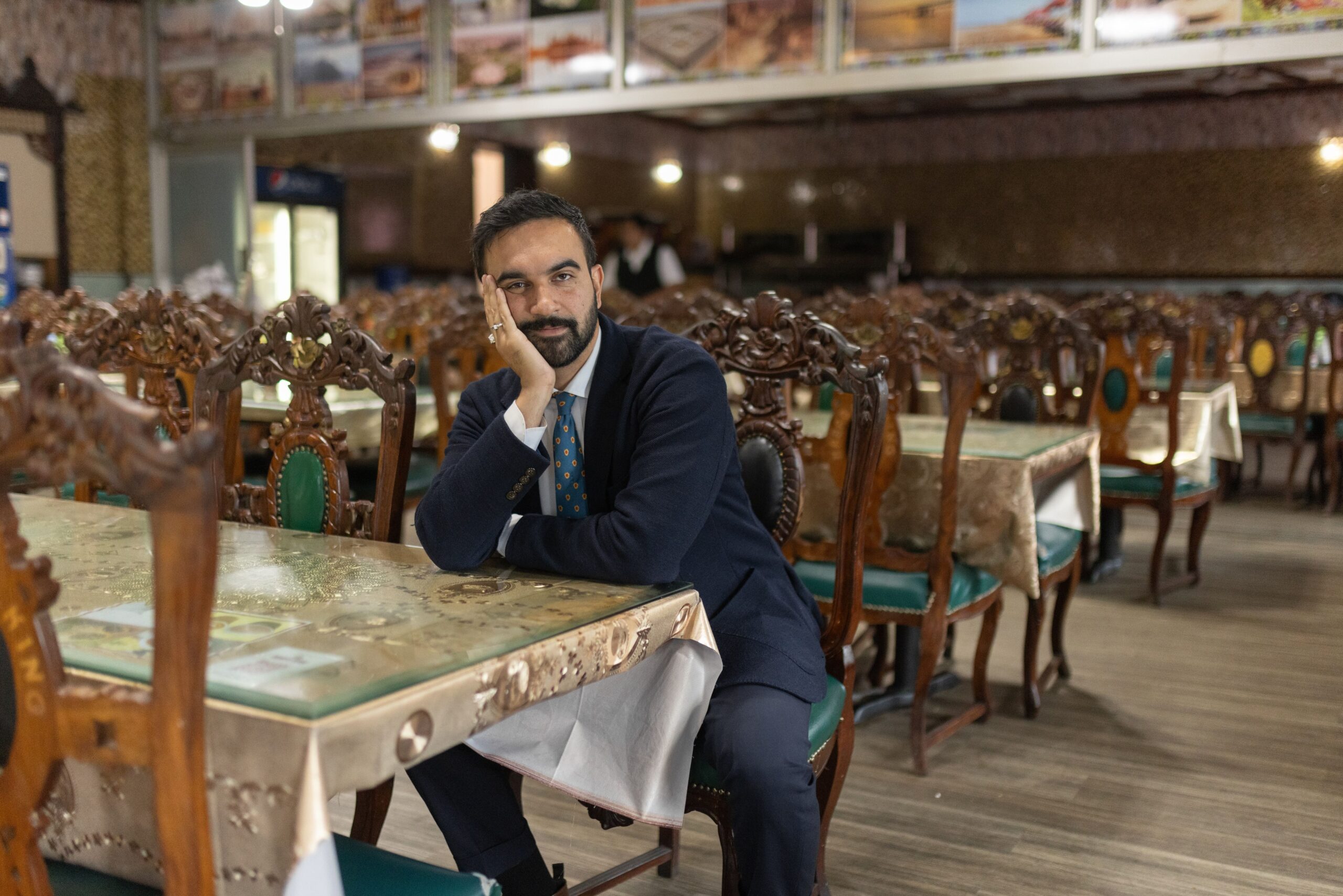
In this series, DJA journalists share their experiences and tips for getting their work done, how they find the industry and how to create a more inclusive and accessible media environment. For this edition, meet Sonali Gupta.
Some Disabled people have predictable conditions and days – they can expect their brain and body to perform a certain way the vast majority of time. My days are rarely the same. My disability is a progressive one so my day-to-day looks a lot different today than it did even six months ago. That means relearning my body’s needs over and over again and how I can support that. It’s hard seeing your body slowly waste away alongside a lot of my functionality. But I’m a firm believer in making things work. I don’t think enough people know how much creativity goes into living with a disability day-to-day. It’s everything from paying attention to textures, surfaces, to lips of doors and heights of chairs and navigating around those. There’s a lot of unseen labor in what we do every day just to function. Most of my time revolves around that and whether I have a caregiver that particular day.
Lately there has been some upheaval around this, not least of all because I recently moved back to the U.S. from India. This throws a kink in my entire day’s planning. If I have care then I can easily plan out my day, including when I’ll get to work, which involves a scheduling of its own. Whether it’s my work at DJA, audio projects I’m building or essays I’m submitting, freelancing can be haphazard without some level of organization. In order for me to successfully complete my work, I need to know that my most basic needs can be met, like having someone help me to the bathroom or other activities of daily living. Without that, work becomes a stressful task that I think about all day. Right now, I work around my care rather than having my care work around me.
Regardless of how chaotic my average day is, there are six things that help me accomplish my work.
Understanding My Most Productive Workspace and Time of Day
I like fresh air in the morning so even if it’s chilly outside I’ll crack open a window. It helps me get my body and mind ready for the day. Mornings are when I’m usually the most energized and motivated to get my work done so I try to keep that momentum going as long as possible. I’ll do a quick scan of my planner (I have a physical one that I use alongside Google Calendar) to check out the day. I use a separate notebook to track my caregivers’ hours and tasks I need to finish with them, like practicing walking down the hallway, stretching, or reaching the upper shelves of my closet to get a sweater. I also spend a lot of time training them. Each night, I do a run-down of what the next day brings to get my brain ready to take it on. Before I even open my laptop, I’m going through a checklist in my head when it comes to my needs: Will there be someone around to help me with xyz activity? Have I arranged all of my transportation for this week? Is another caregiver about to quit?
Some days I work from bed, surrounded by pillows and cushions propping me up. Other mornings, I’ll transfer to my powerchair and work at a table. My body usually dictates where I’ll work.
Tackling Administrative Work
I usually spend 1-2 hours on admin work in the middle of my day. This includes any pending medical work I need to follow up on, booking county rides or my transportation for the next month— yes, the county buses fill up quickly so I have to book 1-2 months in advance — meal prep, paying medical bills, ordering medication refills, booking doctor’s appointments and so much more.
Integrating Movement
Whether it’s doing an online yoga class, walking down the hallway or swimming in a therapy pool, a little movement everyday is important to me. It’s easy to spend the entire day seated only walking a few steps in between my sitting. Some days I need the rest. Other times, my legs and back become stiff and painful and I end up spending more time trying to get relief instead of my work. I try to break up my seated time with standing time. For example, I’ll spend 1-2 hours working at my desk with my timer on, then get up to stand on a vibration plate for 10 minutes, walk around my apartment with my walker, stand in the kitchen and chop some carrots or stretch.
Using Timers
I’m a fan of tracking my time on the laptop, not just for accountability but to see what I’ve achieved at the end of each day, even if it doesn’t feel like much. I like Toggl, an app that can also help me when it’s time to send in an invoice.
Limiting Tasks
I tend to put way too much on my plate. That leads to a lot of disappointment. So, the way I work now, is by creating achievable goals for the day/week and limiting my tasks. For example, my energy levels fluctuate depending on what type of movement I’m doing. Swimming takes more out of me these days so I know to maintain a low workload on those days. My list will be ‘reply to emails, take a shower, and figure out dinner.’ On other days, my list looks like ‘edit projects, write a pitch, clean my closet.’ There aren’t any rules to this but noting down tasks that are manageable and achievable (but also flexible) is important.
Staying connected to networks
Working at home alone can be very isolating. During the pandemic, when everyone was stuck at home and offices went remote, I remember feeling a sense of ‘now people know what it’s like for us.’ Living with a disability can feel a lot like that. If I don’t interact with anyone other than my caregivers or parents, I make sure I reach out to people in my community. Whether it’s other journalists and writers, Disabled friends, or my alumni network, staying connected to my various networks helps me get unstuck. It’s one of the tasks I list on days I need a lighter load. When I put too much on my plate and start spiraling in guilt from not getting enough done, I’ll reach out to my DJA colleague John and he’ll send me a list of the reasons why I’m not a failure. It’ll turn my mood around in an instant.
By evening, I try to keep my plate light — literally and figuratively. But some nights, when the world goes quiet, ideas start flooding in. I’ll open my laptop again, chasing a sentence that wouldn’t come earlier. There’s something about the dark that takes the pressure off for me.
At first, having a different schedule everyday drove me crazy. It still does. I like to get as much as I can done in a day. I don’t like to rest during the day either. But once I leaned into my non-routine routine and stopped resisting it, my days started to feel exciting, not chaotic. I started to look at productivity differently and in turn was able to work with ease and enthusiasm.
Learn more about how DJA team members work
More DJA Coverage
Sae Joon Park is in disbelief. Park, an army veteran who came to the U.S. from South Korea when...
By
November 5, 2025
Kara McCurdy Prior to New York Assemblyman Zohran Mamdani’s win in New York City’s Democratic primary, there were questions...
By
November 3, 2025
Dr. Cynthia George — better known around Nashville’s punk scene as Dr. CynCorrigible — is impossible to miss....
By
November 5, 2025


